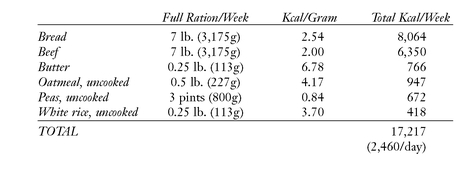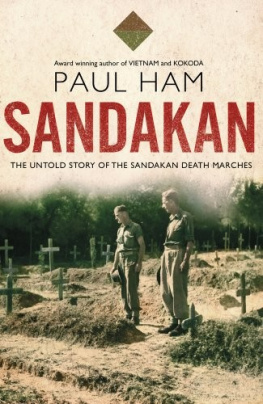ACKNOWLEDGMENTS
Nothing lightens the load of research and writing more than the friends who can be imposed upon to read and critique drafts in various stages of disrepair. On my list are Laura Chmielewski, Kevin Dreyfuss, Mary Gallagher, Don Gerardi, Andy Goodspeed, Graham Hodges, Peter Hoffer, Bob Mutch, Marilyn Pettit, Barney Schecter, Gunja Sen Gupta, David Troyansky, and Jocelyn Wills. Mike Wallace, though immersed in writing the sequel to Gotham, was exceptionally generous with his time, encouragement, and unrivalled knowledge of New York City history. I am much indebted to Paul Goodspeed, who read several incarnations of the manuscript with great care and gratifying enthusiasm. Special thanks as well to Josephine DeCicco, my very capable research assistant, for her dedication and hard work. All of these folks did what they could to make Forgotten Patriots a better book, and I hope they will recognize the fruits of their labors.
For their continued interest, advice, and willingness to field queries without complaint, I am also deeply grateful to Kathleen Axen, Cathy Ball, Swapna Banerjee, Dan Conaway, Bob Doyle, John Duffy, Chris Ebert, Firth Fabend, Robert Fippinger, Bunny Gabel, Dan Gabel, John Glynn, Ken Hannigan, Toby Harshaw, Irma Jaffe, Ann Kaplan, Richard Mooney, Phil Napoli, Kristen Nyitray, Stuart and Nancy Rabinowitz, Linda Reno, Jessica Roe, Alexander Rose, and Nadezhda Williams. Sherry Warman, interlibrary loan supervisor of the Brooklyn College Library, proved extremely helpful by tracking down innumerable hard-to-find books and articles. I am thankful as well for the help I received at the David Library of the American Revolution, the Brooklyn Historical Society, the William L. Clements Library, the New York Public Library (Rare Books and Manuscripts Division), the New-York Historical Society, the Museum of the City of New York, the Henry Sheldon Museum of Vermont History, the Hofstra University Library, the Smithtown (New York) Public Library, and the Northport (New York) Public Library. I am also pleased to acknowledge that my research and writing was facilitated by an NEH Summer Stipend as well as by a grant from the Wolfe Institute at Brooklyn College.
Lara Heimert, my editor at Basic Books, deserves special notice for the wonderful acuity, determination, and good humor with which she steered the manuscript through final revisions. Brandon Proia, Laras assistant, and Sandra Beris, the project manager, get a tip of the hat as well for keeping everything moving along, on time and on course. I am also profoundly indebted to Sam Stoloff of the Frances Goldin Literary Agency for his steady commitment to the project and watching my back when it needed watching.
Forgotten Patriots is dedicated to my wife, Pat Adamski, and to our two children, Matt and Kate, whose love and support make everything worthwhile.
APPENDIX A
Counting Calories
British officials always insisted that American prisoners received two-thirds of the rations provided British seamen and soldiers. In a letter to Washington on January 19, 1778, General Howe declared that his troops consumed seven pounds of bread and seven of beef per week, supplemented by what were called small speciesfour ounces of butter or cheese, eight ounces of oatmeal, three pints of peas, and perhaps a few ounces of rice, if available (The Papers of George Washington 13: 280-282). The energy potential of such a diet comes to roughly 2,460 kilocalories per day:

Obviously it is impossible to measure the energy content of these foods with precision, as their composition and quality necessarily varied by season, region, and supplier. Bread made of oat bran, for example, has less energy potential (2.36 kcal/gram) than wheat bread (2.54 kcal/gram), whereas rye bread has more than either (2.58 kcal/gram). I assumed that soldiers were more likely to eat bread made of wheat. In the case of beef, the energy content varies so widelyfrom, say, lightly trimmed shoulder (1.59 kcal/gram) to a blade roast (2.54 kcal/gram)that I have arbitrarily adopted a middle-range figure of 2.00 kcal/gram. In any case, all these figures are probably high, because the freshest, highest-quality foods were likely as not reserved for officers or were appropriated by cooks and quartermastersor never reached the army in the first place. Small wonder that soldiers without the means to buy additional food in local markets often resorted to stealing from civilians.
In theory, then, a prisoner on two-thirds rations could expect to consume no more than 1,640 kcal per day, at best. If that prisoner were twenty-five years old, stood five feet seven inches tall, and weighed 160 pounds, he would need 2,186 kcal every day to maintain his weight when completely sedentary. Bearing in mind that one pound of body weight represents 3,500 kcal, the deficitroughly 550 kcal per daywould result in the loss of about one pound of body weight per week. If that same prisoner were very active, he would need to consume as much as 3,323 kcal per day to maintain his weight. In that case, the deficit1,680 kcal per daywould cause him to lose more than six pounds a week. Taller and heavier prisoners, having higher energy needs, would lose weight even more rapidly, as would prisoners who were ill or recovering from injuries. But because caloric requirements decline with age, older prisoners would lose weight less quickly. A sedentary fifty-year-old man, standing five feet seven inches tall, needs only 1,895 kcal/day to maintain a weight of 160 pounds.
Even two-thirds of the rations described by Howe were better than the meager provisions supposedly received by the men confined on the Jersey, however. As Captain Dawson informed Washington in 1781and Dawson, it may be recalled, was boastingthe weekly food allowance for naval prisoners in New York was 66 ounces of bread, 43 ounces of pork, 22 ounces of butter, and 2 pints of oatmeal (The Papers of George Washing, Library of Congress). As before, calculating the energy potential of these foods involves a good deal of guesswork. It is nonetheless apparent that men consigned to the Wallabout hulks fared even more poorly than their compatriots in the Sugar House or the Provost:

Of course, as we have seen over and over again, prisoners rarely if ever received the quantity or quality of rations to which they were supposedly entitled. On the Jersey or in the Sugar House, all of them must have lost weight rapidly, some dangerously so. In conjunction with poor to nonexistent sanitation, rapid weight loss accelerated the spread of scurvy, typhus, dysentery, and other diseases. Men who survived even a month under these conditions would have been reduced to listless, vermin-infested skeletons. Few appear to have lasted more than six months, and it was only the rare prisoner who managed to hang on for a year or more. As I have suggested elsewhere, the overall mortality rate was almost certainly in the range of 50 to 70 percent.
APPENDIX B
Cunninghams Confession
On Saturday, January 28, 1792, a pair of Philadelphia newspapers, Dunlaps American Daily Advertiser and the Independent Gazetteer and Agricultural Repository, ran the same 650-word story under an eye-catching headline:
The LIFE, CONFESSION, and LAST
DYING WORDS of
Captain William Cunningham,
formerly the British Provost-Marshal,














